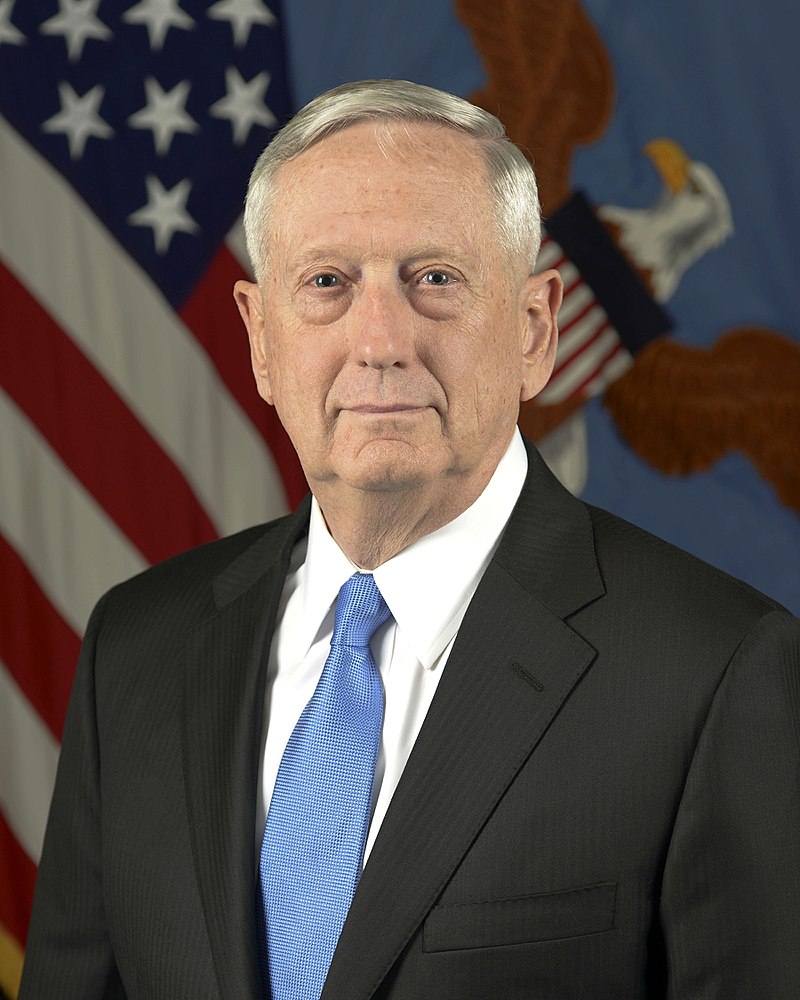Many people trusted that Secretary of Defense Mattis would be able to rein in the dangerous impulses of his erratic boss who, as commander-in-chief, has the authority to order the use of military forces—including nuclear weapons.
Indeed, General Mattis may have privately assured some members of Congress that he would get into the loop to restrain President Trump if it looked like a nuclear crisis was brewing. So people are naturally worried that Mattis’ resignation will put Trump back in full control of US nuclear weapons.
But regardless of what Mattis may or may not have told members of Congress, the secretary of defense is not in the decision chain for a nuclear launch and has no ability to stop a launch order from going through. Perhaps Mattis could have talked Trump out of ordering an attack in the first place, assuming he knew the president was considering such an attack, but he had neither the legal authority nor the ability to prevent one from being carried out.

(Source: Dept. of Defense)
The fact is that the US president has sole and complete authority to order a launch of nuclear weapons. No consultation with military or political advisors is necessary.
It’s just the president’s finger on the button, and no one gets a veto.
One Phone Call is All it Takes
To order the use of nuclear weapons, the president would simply call the Pentagon’s “War Room,” read a code to an officer to confirm that he or she is indeed the president, and specify what targets to attack. (If the president is not at the White House or other location with secure communication, he or she would use the so-called nuclear football to order the use of nuclear weapons.)
After confirming the president’s identity, the War Room would send an encrypted launch order directly to aircraft pilots, the underground crews that launch land-based missiles, and/or the submarine crews that launch submarine-based missiles. This whole process would take only minutes and does not involve anyone else in the Pentagon. Secretary of Defense Mattis might only find out after the fact.
Nuclear-armed aircraft would take some time to prepare for takeoff and reach their targets, meaning in principle there may be time for the secretary of defense to intervene and order the planes to return to base. It would be illegal and the pilots would likely ignore the order, but it would be physically possible. Some fraction of US submarine-based missiles could be launched within about 15 minutes of receiving an order, which may or may not be enough time for someone to attempt to intervene.
However, it would likely not be physically possible to intervene in the launch of US land-based missiles. These 400 missiles are kept on high alert and it would only be a matter of minutes from the presidential order to when missiles would leave their silos.
(Keeping these missiles on high alert results in another significant risk—a US launch based on a false alarm. The United States keeps these weapons on hair trigger alert to maintain the option of launching them quickly on warning of an attack—before they could be destroyed by incoming warheads. However, there have been numerous false alarms in the past and this danger remains. Because it takes only 25 minutes for a long-range missile to travel between the United States and Russia, the timeline for making a launch decision a very short and the president would have only a few minutes to be briefed, confer, and make a launch decision.)
So while people might hope that someone like Secretary Mattis could rein in the president’s dangerous impulses, there is essentially nothing Mattis or anyone else could do to stop a launch they thought was not justified.
The Real Problem: US Policy
While the current president has highlighted the risks inherent in this system, the problem is far bigger than President Trump. At its core, the problem is US nuclear weapons policy.
The policy must change.
The United States should:
- End the president’s sole authority to order a nuclear attack. We have developed a plan to do just that by adding two more people to the decision-making process;
- Adopt a policy that the only purpose of US nuclear weapons is to deter their use by another country, so that the United States will not be the first to use nuclear weapons in a future conflict;
- Take weapons off hair-trigger alert and end the option of launching on warning of an attack.
